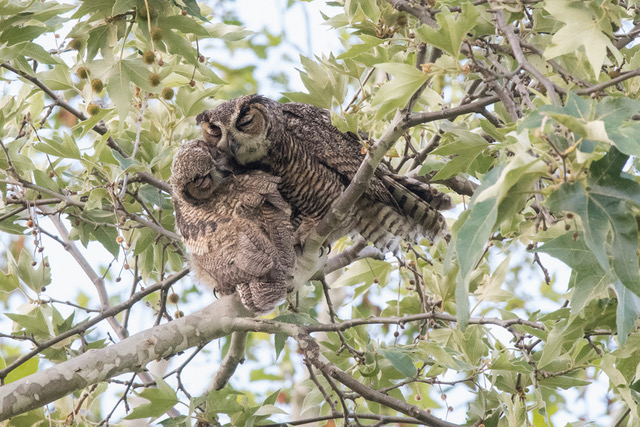
The work of an arborist typically focuses on the safety and care of trees in urban and suburban environments, but when it comes to wildlife in those trees, our general hope is that we don’t run into it. Often it’s unexpected and can become an instant dilemma both in terms of our conscience and doing our job, and there isn’t much in the way of literature or documentation to give us direction on how to deal with it.
About 20 percent of birds live in cities. In the U.S., about 80 percent of people live in urban areas, and this percentage is expected to grow. While we continue to expand our needs for development and convenience, wildlife habitats continue to shrink and unfortunately, arborists often have a front-row seat. It’s nothing that any arborist I know likes to admit, but we’re not exactly without blame.
At the start of a job an arborist inspects the work site for safety hazards and strategizes ways to maintain safety while working. It makes sense that we should also inspect the job site for wildlife and how not to interfere, especially during nesting season.
Homeowners can get a head start on this as well. If your plan is to have work performed on a tree and something is spotted up there that may be nesting or perhaps even protected under the law (which I think just about everything is except the European starling), then it may be just a matter of waiting a few weeks. As arborists, we can usually help with determining the urgency of a potentially dangerous tree and if that tree is providing protection for nests, then we should come up with a plan to responsibly avoid its destruction. In some circumstances, the plan may require utilizing an outside resource such as a local wildlife department and wildlife care center. Here are a couple of links for more information.

Injured Birds | Richmond Audubon Society
Found Injured Wildlife — Richmond Wildlife Center
As our industry advances, so should our efforts in conservation. I think that it will become a common practice in our business to implement protocols and training for wildlife habitat avoidance. Just as we desire comfort and beauty in our urban forests, we also have a responsibility to make sure that the unassuming wildlife we share it with is also protected.


